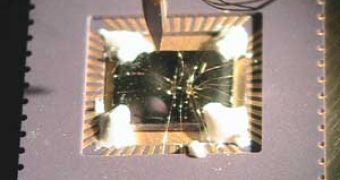Most of the experiments carried out on quantum computer models revolve around the use of gallium arsenide chips to create quantum dots. However, it seems that such a material is not exactly the ideal one when trying to control the spin of an electron inside a quantum dot. The solution for the problems experienced with the gallium arsenide material may be represented in the form of graphene quantum dots, which are much more stable in maintaining the spin inside a qubit.
The new findings of the scientists from the Solid State Physics Laboratory are presented in the Applied Physics Letters and describe a crucial step in creating the so-called single electron transistor. Klaus Ensslin, one of the researchers involved in the study, explains that the spin inside a quantum dot may be either up or down while in a magnetic field, and in special configurations it could ever be both at the same time. However, the spin cannot keep a particular state for a indefinite amount of time due to fact that the electron's spin is greatly influenced by the spin of the atoms in the close proximity.
Mathematical models of the graphene material suggest that it will be able to overcome the problems experienced with the gallium arsenide. Single quantum dots have been create previously by using graphene, but it is still unknown whether a quantum computer using such material would actually work. Carbon atoms present relatively low nuclear spin thus interactions between separate atoms are greatly reduced.
Though it has been demonstrated that a quantum dot is possible in a graphene material, the research team still needs to prove that the spin inside it can be easily manipulated and that it can be made small enough to represent a solution for the problems related to building a qubit. Basically quantum computers would need to be able to make a difference between each individual electron inside a qubit.
In order to explain the difference of performance between the semiconductors currently being used in manufacturing computer components and the importance of the development of the qubit, Ensslin makes a small comparison. The semiconductor materials usually have smooth edges while the graphene has relatively rough edges. The most important aspect in conducting an experiment with graphene materials involves detecting individual atoms situated right on the edge in order to obtain a better control over the electrons' spin.
Such capabilities are currently out of physical reach, but in just a few years, technology may provide a solution for testing the spin inside a graphene quantum qubit.

 14 DAY TRIAL //
14 DAY TRIAL //